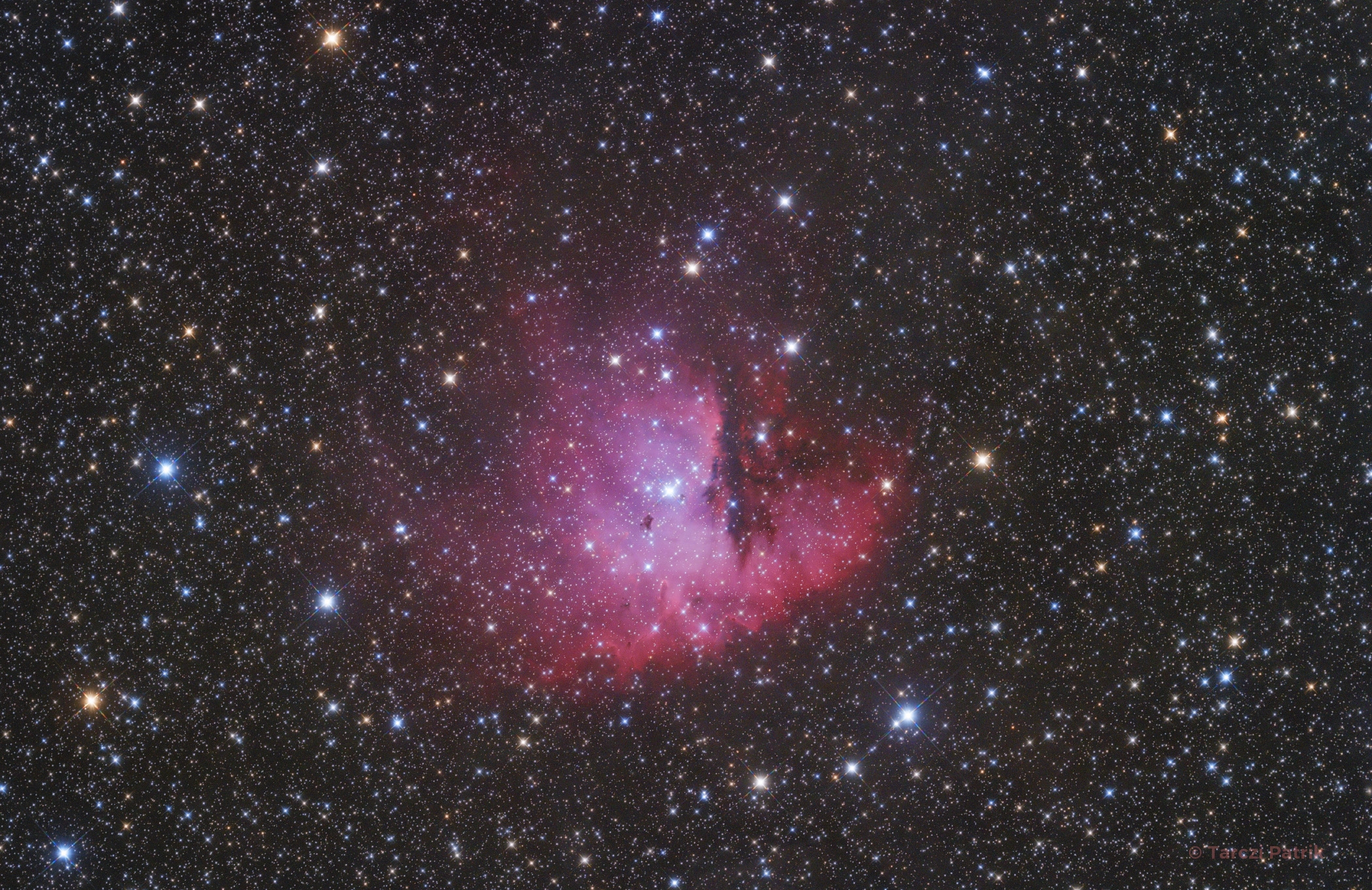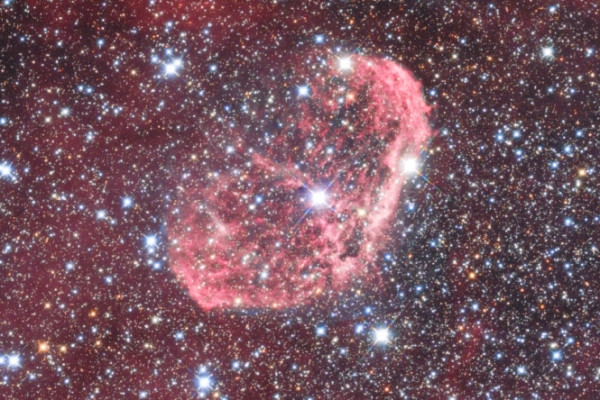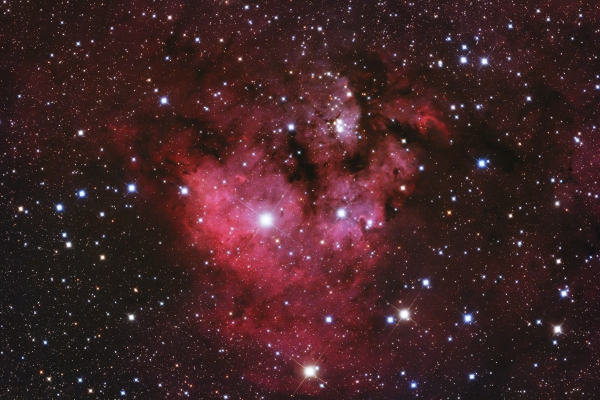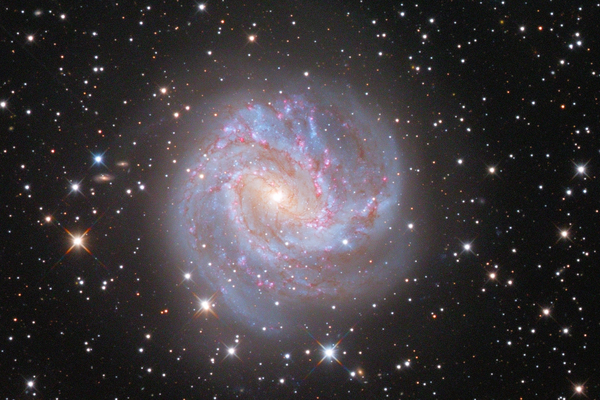The Pacman Nebula
NGC281

Technical data
| Instrument: | 173/700 Newton-astrograph (ZsIO), SkyWatcher comacorrector F/4 |
| Camera: | Canon EOS 60D (modified) |
| Filter: | Baader UV/IR block |
| Mount: | SkyWatcher NEQ6 Pro Synscan (modified) |
| Guiding: | Lacerta M-Gen autoguider |
Image data
| Exposure time: | 75*5 mins, ISO800 |
| Location, date: | Hungary, Izsákfa - 2014. September. 27. |
| Transparency: | 3/10 |
| Seeing: | 7/10 |
| Temperature: | 7 °C |
| Processing: | CCDStack, Registar, Pixinsight LE, Photoshop |
Description
In the '80 years a succesful game is called Pacman. The Pacman Nebula got its name after the protagonist of the game.
Technical data
| Instrument: | 173/700 Newton-astrograph (ZsIO), SkyWatcher comacorrector F/4 |
| Camera: | Canon EOS 60D (modified) |
| Filter: | Baader UV/IR block |
| Mount: | SkyWatcher NEQ6 Pro Synscan (modified) |
| Guiding: | Lacerta M-Gen autoguider |
Image data
| Exposure time: | 75*5 mins, ISO800 |
| Location, date: | Hungary, Izsákfa - 2014. September. 27. |
| Transparency: | 3/10 |
| Seeing: | 7/10 |
| Temperature: | 7 °C |
| Processing: | CCDStack, Registar, Pixinsight LE, Photoshop |
© Patrik Tarczi
Recommended photos

The Crescent Nebula
NGC 6888, also known as the Crescent Nebula, is a cosmic bubble about 25 light-years across, blown by winds from its central, bright, massive star.

The Devil's Head Nebula
Towering pillars of cold gas and dark dust adorn the center star forming region of Sharpless 171.

Southern Pinwheel Galaxy
Southern Pinwheel Galaxy, also known as the M83, is a barred spiral galaxy located in the southern constellation Hydra.


